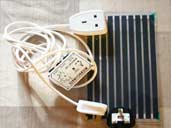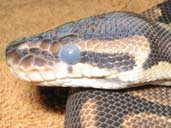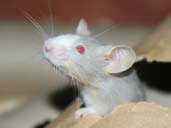Royal Python Forum
The forum is a place for members to share good practice and ask questions about Royal Pythons and their general care. It is free to register and easy to use. There are plenty of regular members, so any queries about Royal Python care, breeding, health and keeping should be answered within a short space of time.
Frequently Asked Questions.
The RoyalPython.co.uk forum is a good place to gain advice and feedback which is personalised for your specific problem or enquiry. We always welcome any questions you may have regarding your Royal Python and our members will eagerly offer friendly and informed answers. Here are a few frequently asked questions that may help you in your search for Royal Python advice.
Can multiple Royal Pythons be kept together in the same vivarium?It is unadvisable to house multiple Royal Pythons together, but many owners do without any problems. It is a big ongoing debate into the pros and cons of housing together, but really it is all down to personal choice whether you choose to house together or not.
The dangers for housing together include the chance of cannibalism (especially in younger Royal Pythons), early or unexpected breeding, stress in one or all of the Royal Pythons and even disease passing from one Royal to the other and doubling your vet bills. Royal Pythons are particularly prone to stress and may go on a hunger strike if conditions are not perfect for them.
If you do decide to house your Royal Pythons together in one vivarium it is important that both snakes are of a similar size, preferably adults. You will also need to add twice as many hides to the vivarium to ensure that one snake does not dominate the best hiding spots, which would cause stress to the other. You should feed separately and be ready for if breeding occurs. I would also advise having a spare RUB (Really useful box- plastic tub with air holes added to it), heat mat and thermostat handy, just in case problems arise and you need to separate your Royal Pythons quickly.
 Do I need a thermostat?
Do I need a thermostat?
Yes, uncontrolled heat sources can cause many problems. Minor problems include stress, respiratory infections and loss of appetite if the temperatures are not correct. Royal Pythons need heat to help them digest their food, so a low temperature can cause digestive problems. A really high temperature can cause burns to your snake and even death. It does not take many degrees to push the temperature up into dangerous levels, so always ensure any heat source is regulated by a thermostat. Thermometers and heat guards for bulbs and ceramic heaters are also vital equipment within the vivarium.
What size vivarium do I need to house my Royal Python?
Royal Pythons do not require large enclosures and can become stressed and stop eating if they are housed in a vivarium that is too large for them. Generally the size of the vivarium depends on the length of the snake. A good rule to remember is that the perfect size vivarium is when the length of the snake equals the length of the front and one side of the vivarium, ie. if you have a 3ft Royal Python then the right size vivarium for that snake would be about 2ft by 1ft. A baby Royal Python can be housed in a small faunarium or RUB (plastic box with air holes added) until it becomes large enough to be comfortable in a vivarium.
My Royal Python just rolls into a ball when I get him out. Is this normal?
Royal Pythons are called Ball Pythons in America, because when threatened the Royal Python will coil up in a ball to hide away from the potential threat. This behaviour is quite normal and regular handling is the key to calming your Royal Python down. Once your snake gets used to been handled, then it will learn not to mind it too much. Royal Pythons can be handled up to 3 -5 times a week for short periods, but be aware that too much handling can lead to your Royal Python going off food.
Once your snake recognises your scent and understands that you are not a threat, then it will usually be more confident around you. You can speed up this recognition of your scent up by placing an item of your clothing in the vivarium for a while or by always using the same scented soap before every handling session.
 My Royal Python has developed dull skin and the eyes have turned blue. Should I worry?
My Royal Python has developed dull skin and the eyes have turned blue. Should I worry?
No, your Royal Python is just starting the shedding process, so this is nothing to worry about. Shedding normally takes between 2 to 3 weeks depending on the snake. There is little you need to do to help, as Royal Pythons will shed their skin without assistance, but ensure that a large water bowl is available so your snake can soak itself if it wants to. Regular misting of the vivarium with a spray bottle, a damp hide and a rock, stone or log in the vivarium also help. After your snake has shed, remove the shed skin immediately, along with any faeces that usually accompanies it. Check that all the shed has come away from your snake, especially around the eyes as retained eye caps can be a problem.
My Royal Python is not eating, what shall I do?
All snakes are designed not to eat regularly, as they are opportunist hunters in the wild. Royal Pythons are notorious for being problem feeders and you should not worry too much if your Royal Python misses the odd feed.
You should only begin to worry about your Royal Python if it begins to lose a lot of weight after a prolonged fast. This is why regular weight checks are important as part of your Royal Python care routine.
To encourage your Royal Python to eat there are various techniques you can use. Braining involves making an incision into the head of the prey item to expose the brain matter and is a very good technique to entice your Royal Python to eat. You can also try a variation in diet to see if a different type of prey is more appetising. Mice, Rats and Gerbils are all safe to feed to your Royal Python, so try something different and see if that works. Another technique is to place your Royal Python in a confined, dark box with the prey item and leave them together for a while. Sometimes the closeness to the prey item and the lack of any other distractions will encourage your snake to eat.
Can I feed my Royal Python live food?
 Feeding live food is very unadvisable, not just because of the cruelty inflicted on the prey item, but also because an uneaten rodent can do a lot of damage to your snake. Rodents have sharp claws and strong jaws and teeth, so if they decided to attack your snake then serious injury can be caused. They are quite capable of gnawing your Royal Python's flesh to the bone and many snakes have been put down after or died from these injuries. If you do decide to feed your Royal Python with a live food item then do not for any reason leave them unattended together.
Feeding live food is very unadvisable, not just because of the cruelty inflicted on the prey item, but also because an uneaten rodent can do a lot of damage to your snake. Rodents have sharp claws and strong jaws and teeth, so if they decided to attack your snake then serious injury can be caused. They are quite capable of gnawing your Royal Python's flesh to the bone and many snakes have been put down after or died from these injuries. If you do decide to feed your Royal Python with a live food item then do not for any reason leave them unattended together.
There are also many legal and moral arguments regarding the feeding of live prey items, so you should check out the animal cruelty and protection laws beforehand to ensure that live feeding is not illegal in your area.
Still Got Questions?
Then please enter the forum. Our regular members will welcome your question and it would be great to have you as part of TheRoyalPython.co.uk community.

